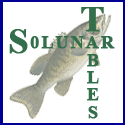Bass on Hook is Supported by our readers.
As an Amazon Associate We earn commissions from qualifying purchases with no extra cost to you.
For more informtion read our Amazon Affiliate Disclosure and Affiliate Disclosure Policies.
Pro Staff Question - How Do I Approach Fishing For Bass After They Are Done Spawning
Charles "The Bass Doctor" Stuart's Answer

Post spawn bass are a tough bite, there is no question about it
My game plan is always to "back off" and look for the females that usually stay close to the nests even after the hatch.
They will often suspend mid-way in the deepest water.
I like a 5 inch jerkbait or an undershot rig to catch these "picky" fish.
Color varies but for the jerkbait I like silver and blue and for the undershot, I like a four inch worm in green or brown.
Tight Lines!
Charles "The Bass Doctor" Stuart
BassonHook Pro Staff
Dennis "The Fishin Professor" Bryant's Answer

Since every part of the country is most-effectively fished 'just a little bit different' in the post-spawn period
I decided to check with a couple of professional-angler 'clients' of mine located closer to your " neck-of-the-woods" just to make sure.
Their suggestions pretty much matched my own past findings so I will pass them on to you.
How To Fish Post Spawn Bass Effectively
The key to success at this time of the year is to SLOW DOWN and SIZE DOWN for more and bigger fish.
Small topwaters, mini-sized ⅛ oz. spinnerbaits and 4" dark-colored unweighted (Culprit-style) worms with mini-glass-rattles inserted reign supreme during this period on most lakes in the northern US.
My favorite trick at this time of the year is to take an inexpensive indoor-outdoor remote digital thermometer with a ¾ oz. sinker attached closely to the outdoor temperature-sensor, onboard the boat with me.
Find the highest water temperature in the lake at the 3', 4' & 5' depths (rather than the highest surface temps which change with the wind direction & frontal passages).
Use your lake's contour-map and locate creek channels, quick-drops and isolated structure to coincide with these highest-temperature areas.
Concentrate your efforts here (beginning with the highest temperature located at 5', then 4' and finally at 3') while using the lures mentioned above in reverse order (the worm beginning at 5', Spinnerbait at 4' and less and the topwater at 3' only if the water is muddied).
Increase the depths fished by three feet each if a springtime LOW has just passed.
This stunt of mine may put you all alone in some sections of your lake but the end-results at the scales should make up for any loneliness you may have experienced!
Good Fishin'!
Dennis Bryant
The Fishin' Professor!
Leo Watson's Answer

Quite a few people have trouble locating post spawn bass.
It really isn't all that hard and I will try to make it as easy for you to understand as I can.
One thing to realize is all the bass do is reverse their migration routes.
They will use the same migration routes they used in the spawn but they will work their way out towards deeper water.
This could be the next drop off or point with a difference in depth.
The bass after they have spawned have spent a tremendous amount of energy a will take some time to recuperate.
It is during this time that most anglers have trouble enticing them to bite.
Keep in mind that these post spawn bass will not readily chase a lure so a slow methodical retrieve should be used.
My baits of choice would be in the lines of a tube lure, jig and crawfish, Carolina rigged baits worked real slow.
If you are fishing grass beds pay attention to the outside edges after the spawn.
They will stage on the edges just like they do in the pre spawn.
As always if you have any more questions just forward them through this fine web site.
Thank you,
Leo Watson










